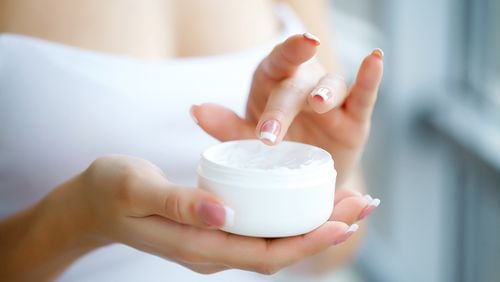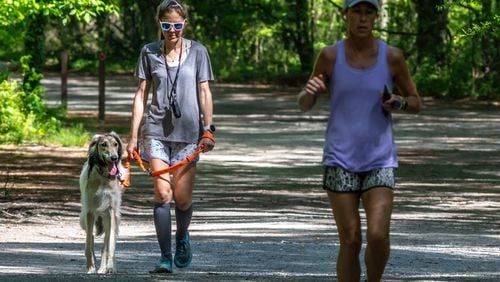The Guardian calls it “disturbing.” The BBC says it’s “dangerous.” A New Jersey news outlet warns parents to “beware” of their prepubescent kids’ TikTok-driven interest in high-end skin care products.
Teen Vogue, meanwhile, insists kids wanting multistep morning and evening face-care routines is no big deal – that the desire to engage with grown-up hygiene practices is “nothing new.” And Mashable, after speaking with kids and parents, wondered if the real problem was children’s sloppy shopping habits in stores like Sephora and Ulta that have historically provided an upscale, treat-yourself environment for adults: “If these young girls were clearing drugstore aisles of Neutrogena and Aveeno, the discourse may not have reached such a fever pitch.”
Until recently, multistep skin care routines were understood to be an adult’s game. Products like Pond’s cream moisturizers have, after all, been around since before World War II to “help women keep their skin looking radiant.” “Anti-aging” ingredients like retinol and Vitamins C and E, which experts say help the skin retain its smooth texture and even tone, gained popularity in the 1990s, largely among older women. In the 2010s, women (and some men) in their 20s made the pursuit of a selfie-ready complexion a trademark millennial obsession, with many Americans discovering the Korean multistep method that both preps the skin for makeup and protects the skin from it.
Now armed with neon-packaged (and sometimes pricey) creams, masks and peels, kids have inundated the skin care market. On the one hand, it’s perfectly common to see preteens want to pamper themselves in grown-up ways; it’s even healthy for them to want to take care of their skin. But on the other, the phenomenon could be evidence of adults infecting them with our unhealthy fear of aging.
So is this something we should panic about, or not?
For generations, it has been widely considered normal – cute, even – for little girls to want to participate in certain beauty rituals of adult womanhood. Nail salons all over the nation have kiddie manicure and pedicure options. Girls have been playing with their own kiddie makeup sets (and stealing their moms’ real makeup sets) for decades; Target sells not just play makeup but miniature vanities. To make a one-word argument for the existence of this whole phenomenon: Claire’s.
And today, just as in prior generations, girls learn self-pampering behaviors from both adult women and other girls. Twelve-year-old Olivia Sauvage crafts her skin care routine from TikTok videos where influencers walk viewers through the “clean girl aesthetic,” which encourages a minimalist approach to beauty and fashion. Every morning, Sauvage washes her skin with a cleanser. Then she then applies a mix of a Glow Recipe bronze skin tint and Drunk Elephant moisturizer on her face before topping things off with a niacinamide serum from the Ordinary and sunscreen.
“I don’t do skin care to necessarily make [my skin] better,” she said, after perusing a Sephora in Northern Virginia with her mom. “It’s more of a self-care thing.”
Videos like the ones Sauvage watches frequently garner hundreds of thousands to millions of views and are sometimes sponsored by skin care brands.
Heather Rogers, a Seattle-based dermatologist, is particularly worried about how kids are overexposed to elaborate routines on TikTok, which she says has shifted the zeitgeist to overindulgence. “If someone with a lot of followers is doing their seven-step skin care regimen, people want to emulate that and then they want to talk about it and videotape themselves doing it.”
“And that’s the plight,” Rogers continued: making sure people aren’t turning a healthy habit into a harmful one.
“I try not to get her too much stuff,” said Jamie Matheny, 38, also shopping at a Northern Virginia Sephora, about her 10-year-old daughter, whose routine is stripped down to gentle products, including a Byoma cleanser, Bubble moisturizer and a Byoma gel sunscreen. This was just enough for them to do their skin care routines together. Sometimes they’ll put on face masks and kick back. “It’s a bonding experience.”
Moreover: Kids developing healthy skin care habits early can be a positive development. Dermatologists now recommend that nearly every type of skin be cleansed, moisturized, protected from the sun and nourished with gentle ingredients like hyaluronic acid – all of which, they say, is perfectly kid-friendly, and can even alleviate some of the symptoms of hormonal acne as kids enter puberty.
Common guidance about young people’s skin has come a long way from the harsh anti-acne products of two or three decades ago. Remember when locker rooms and your friends’ bathrooms always had the bracing scent of St. Ives apricot scrub and Stridex pads?
Today, “It’s all about protecting their skin barrier – keeping it working well. And if they’re concerned about age-related change, the sunscreen is the most important thing they can do at this age,” said Brooke Jeffy, an Arizona-based dermatologist who primarily treats kids and teens.
Of course, it is also possible that this trend is another symptom of a society unhealthily obsessed with slowing down aging and staving off the inevitable.
Jeffy frequently posts TikToks and Instagram Reels in which she calls out kids who film themselves using overly damaging and expensive products meant for wrinkle and dark spot prevention.
Some popular products, like The Ordinary AHA 30% + BHA 2% peeling solution, which promises to remedy skin dullness, uneven tone and textural irregularities, are “a no for any person, child or adult, unless someone is experienced with dealing with acids” found in the product, Jeffy said. “This is a really strong product … you can get chemical burns if it’s left on the skin too long. And I don’t really say I trust most kids to take it off when they’re supposed to. The same goes for adults.” The peel and other harsh products, Jeffy and Rogers said, can leave skin overly sensitive and prone to accelerated aging. (The Ordinary did not respond to requests for comment.)
Jeffy, who works about three days a week, says she usually sees five kids a day with acne made worse by using inappropriate products. And Rogers, who primarily works with moms, says she frequently gets frantic messages from her patients about their kids who have developed irritations. Her advice? “Stop everything. Get a bland moisturizer and take away their phone.”
About the Author






